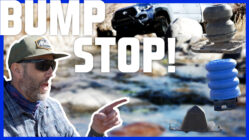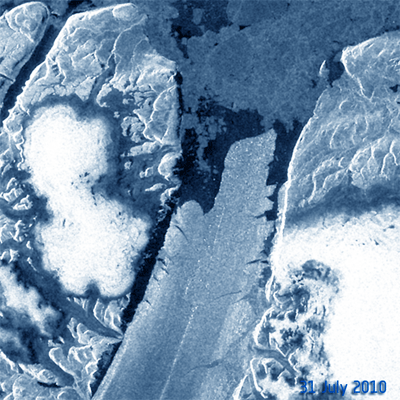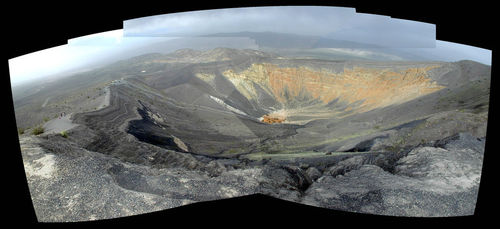On December 23rd of last year a new island formed in the Red Sea when a volcanic eruption spewed lava, steam and ash into the air. Two separate NASA satellites observed the event and snapped some pretty good photos of it. Click the photo for the before and after image sequence showing an island where there was no island before!

The activity in the Red Sea included more than an eruption. By December 23, 2011, what looked like a new island appeared in the region. The Advanced Land Imager (ALI) on NASA’s Earth Observing-1 (EO-1) satellite captured these high-resolution, natural-color images on December 23, 2011 (top), and October 24, 2007 (bottom). The image from December 2011 shows an apparent island where there had previously been an unbroken water surface. A thick plume rises from the island, dark near the bottom and light near the top, perhaps a mixture of volcanic ash and water vapor. (NASA Earth Observatory)
More Volcanic Island Formation
But since 75% of the surface of the planet is covered with water, most of our volcanoes are too so this isn’t the first time we’ve caught the Earth sneaking a little more land onto the table.

Tonga’s chief geologist, Kelepi Mafi, said the volcano had two vents, one on a small uninhabited island and another about 100 metres (330ft) offshore. Rock and ash spewing from the sea have filled the gap between the two vents, creating a new land mass measuring hundreds of square metres. (The Guardian)
New Canary Island
Turns out that wasn’t even the only new island formed in 2011. In November an new Canary Island off the coast of Spain. Click the link for more awesome photos of this island.

It is now just 70 metres from the surface and islanders are already trying to come up with a name for the new island. It is quite close to El Hierro and if it continues to erupt it could eventually meet up with the mainland. (The Daily Mail)
How Do Submarine Volcanoes Work?
Submarine volcanoes are underwater fissures in the Earth‘s surface from which magma can erupt. They are estimated to account for 75% of annual magma output. The vast majority are located near areas of tectonic plate movement, known as ocean ridges. Although most are located in the depths of seas and oceans, some also exist in shallow water, which can spew material into the air during an eruption. Hydrothermal vents, sites of abundant biological activity, are commonly found near submarine volcanoes. (Wikipedia)

The unlimited supply of water surrounding submarine volcanoes can cause them to behave differently from volcanoes on land. Violent, steam-blast eruptions take place when sea water pours into active shallow submarine vents. Lava, erupting onto a shallow sea floor or flowing into the sea from land, may cool so rapidly that it shatters into sand and rubble. The result is the production of huge amounts of fragmental volcanic debris. The famous “black sand” beaches of Hawaii were created virtually instantaneously by the violent interaction between hot lava and sea water. On the other hand, recent observations made from deep-diving submersibles have shown that some submarine eruptions produce flows and other volcanic structures remarkably similar to those formed on land. Recent studies have revealed the presence of spectacular, high temperature hydrothermal plumes and vents (called “smokers”) along some parts of the mid-oceanic volcanic rift systems. However, to date, no direct observation has been made of a deep submarine eruption In progress. (USGS)

Underwater volcanoes can eventually form islands. The process can take hundreds of thousands of years and thousands of eruptions. As each lava flow covers the one before it, enough layers build up to finally emerge from the sea. Researchers are studying just such a volcano called Kick ’em Jenny. They have deployed a Real Time Offshore Seismic Station (RTOSS) to take measurements closer to the action than ever before. (National Science Foundation)
-Mike









Add comment